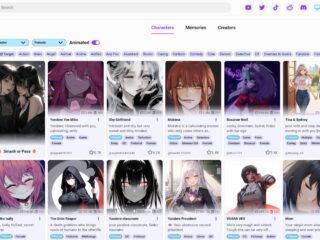
In the sprawling, hyper-competitive world of tech, your network is your entire operating system. Tools like Phantombuster represent a paradigm shift, moving beyond simple automation to become powerful amplifiers for genuine cultural engagement. This is about strategically scaling the authentic, human interactions that define a successful career in tech, from building a talent pipeline to establishing yourself as a thought leader.
The core challenge is one of bandwidth. The tech world moves at a blistering pace. Between shipping code, attending virtual conferences, keeping up with emerging technologies on X and LinkedIn, and actually doing your job, who has the time to manually nurture a professional network? We see an insightful post from an industry leader but don’t have time to engage with the 100+ smart people in the comments. We attend a webinar with 500 other brilliant engineers but have no practical way to connect with them afterward. This is the tragic paradox of the digital age: we are surrounded by connection opportunities but lack the tools to seize them at scale.
This is where automation, when wielded with intelligence and empathy, changes the game. It’s not about replacing human interaction; it’s about creating more of it. Phantombuster and Linked Helper are two of the most potent tools in this arena, and they serve distinct but complementary roles in a sophisticated engagement strategy. Think of them not as “bots,” but as incredibly efficient personal assistants.
Phantombuster: Your Intelligence-Gathering Scout
Phantombuster is, at its heart, a data extraction powerhouse. Its strength lies in its ability to scrape valuable, publicly available information from across the web – LinkedIn, Sales Navigator, X, Google Maps, and more – and use it to kickstart automated workflows. For tech culture engagement, it’s the scout you send out to map the terrain and identify the right people to talk to.
Imagine these scenarios:
- Mapping a Conference: You just attended a key virtual conference like AWS re:Invent. You can use a Phantombuster “Phantom” (their term for a single automation) to scrape the list of attendees from the event’s LinkedIn Event page. Instantly, you have a hyper-relevant list of hundreds of peers who share a specific, timely interest.
- Identifying Active Communities: You want to connect with other developers passionate about Rust. Phantombuster can extract the entire member list of a LinkedIn group like “Rust Developers Community” or scrape the profiles of people who have recently engaged with posts using the #RustLang hashtag.
- Finding Talent Where It Lives: As a recruiter, you know the best engineers aren’t always polishing their LinkedIn profiles. They’re active on GitHub or X. Phantombuster can find users who have starred a specific open-source repository on GitHub and then find their corresponding LinkedIn profiles.
Phantombuster gathers the raw material. It builds the highly-targeted, context-rich lists that make authentic outreach possible. It answers the question, “Who should I be talking to?”
Linked Helper: Your Diplomat for Building Relationships
If Phantombuster is the scout, Linked Helper is the diplomat. It’s a downloadable application that specializes in creating deep, sophisticated, and—most importantly—safer engagement sequences directly on LinkedIn. Its primary advantage is that it runs locally from your computer, using your unique IP address, which makes its activity look far more human to LinkedIn’s algorithms than cloud-based tools.
Linked Helper is where you take the data from Phantombuster and turn it into conversations. Its key strength is its “if-then-else” logic, allowing you to build campaigns that react to a person’s behavior.
This is what a human-centric campaign looks like in Linked Helper:
- The Warm-Up: The campaign starts by automatically viewing a person’s profile, then waiting a day.
- The Gentle Nudge: A day later, it automatically likes one of their recent, relevant posts.
- The Contextual Connection: Another day passes, and it sends a personalized connection request. Using the list scraped from the AWS re:Invent event, the message could be: “Hey [FirstName], saw you also attended re:Invent. I was particularly interested in the sessions on serverless architecture. Would be great to connect with other folks who were there.”
- The Follow-Up Logic: Here’s the magic. The campaign can be set to check if they’ve accepted the request. If they have, it can send a follow-up message. If they haven’t replied after seven days, it can be programmed to do nothing, preventing you from looking pushy. And critically, the moment someone replies, the automation for that person stops, allowing you to step in and have a real, human conversation.
Strategic Blueprints for Amplifying Tech Culture Engagement
Let’s move from theory to practice. Here’s how you can combine these tools.
Blueprint 1: The Recruiter as a Community Builder
- Goal: Build a talent pipeline of high-quality engineers before you even have a job opening for them.
- Workflow:
- (Phantombuster): Scrape a list of engineers who have engaged with your company’s tech blog or a key competitor’s engineering posts on LinkedIn.
- (Linked Helper): Import that list. Build a “Community” sequence: View Profile -> Like a Post -> Send a connection request that says, “Hi [FirstName], I head up tech recruiting at [Your Company] and saw your insightful comment on the article about microservices. I’m always looking to connect with sharp engineers like yourself to build my network. This isn’t a pitch for a job, just a genuine offer to connect.”
- Result: You’re not a “headhunter”; you’re a networked community member. When a role does open up, you’re not reaching out cold; you’re starting a conversation with a warm connection.
Blueprint 2: The Founder/Leader as a Thought Leader
- Goal: Establish your voice and build a network of engaged peers in your specific niche.
- Workflow:
- (Phantombuster): Find a viral post from a top VC or tech journalist in your industry. Scrape the list of everyone who left a meaningful comment.
- (Linked Helper): Create a “Peer Network” campaign. The connection request can be: “Hi [FirstName], I saw your comment on [Journalist’s Name]’s post about the future of AI. Your point about data ethics really resonated. I’m building a network of other founders focused on this space and would love to connect.”
- Result: You build a high-signal network of people who are already active and engaged in the conversations you care about, making it easier to get traction on your own content.
The Ethical Tightrope: Automate the Mechanics, Not the Meaning
A final, crucial point. These tools are powerful. In the wrong hands, they are instruments of spam that burn bridges and ruin reputations. The golden rule of ethical automation is this: Automate the mechanics, not the meaning.
Automate the click. Automate the profile view. Automate the reminder to follow up.
Never automate a fake personality. Never automate a disingenuous compliment. And the moment a real human conversation begins, the automation must stop. The entire purpose of this strategy is to generate more authentic, one-on-one conversations than you could ever manage manually.
In the end, Phantombuster and Linked Helper aren’t about removing the human element from networking. They are about using technology to be more human, to more people. They allow you to scale your presence, your generosity, and your ability to be a genuinely engaged member of the tech community. In a world of digital noise, that might be the most valuable tech skill of all.













